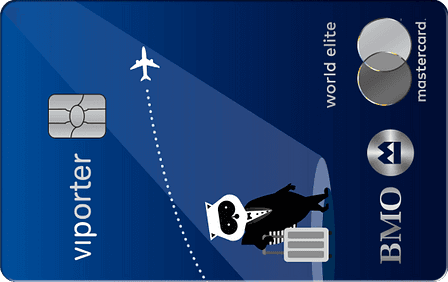
How to Spend Less Money
Sara Skodak
AuthorAbid Salahi
Editor6 min read
Let’s address an addiction that some of us might not realize we have: overspending.
In this blog post, let’s chat consumer-to-consumer about how to spend less money.
Being frequent spenders ourselves, we understand that cutting back isn’t always easy, and that money-saving advice needs to be more substantial than simply “avoid unnecessary spending" altogether.
In this piece, we’ll focus less on what to do and more on how to do it. These strategies will both soothe this harmful habit, and alter your way of thinking.
Figure Out Your Financial Goals
The best plans begin with goal setting.
Start by understanding why you want to spend less in the first place. Maybe you have a future college fund to worry about, retirement savings, or you’re sick of living paycheck to paycheck.
No matter the scenario, consider writing it down or using a financial tracking tool (this might be an app or a spreadsheet). Include details about how much you’ll need and what you can contribute in the short-term and the long-term.
Reflecting on your financial goals can actually help you stay on track and motivate you to follow-through with your budget-conscious blueprint.
Record Your Finances
After you’ve visualized your financial goals, go back to your current financial situation.
Whether you’ve tucked everything into an excel sheet, or you sit down to sift through your monthly statements – try to highlight how much you’re making and how much you’re spending month-to-month on which categories. Once these spend categories are narrowed down, you should be able to see where you could be cutting back.
Build Your Budget
To effectively cut back on unnecessary expenses, you need to build a budget.
Jot down which portion of your monthly income covers necessities like rent, bills, groceries, and gas, then see what’s leftover. These leftovers can be converted into savings or investments.
A popular budgeting method is the 50-30-20 rule. Here’s a breakdown on how this rule works:
- Designate 50% of your income to needs (rent/mortgage, bills, groceries)
- Use 30% of your income to cover wants (dining out, new jeans, home decor)
- Then, the last 20% of your income should be contributed to your savings
Automate Your Savings
So you managed to scrape together some savings, but what can you do with those savings in order to prevent yourself from tapping into them for your next impulse buy?
Well, the simple answer is to put those savings into a savings account as soon as possible.
If you’re a procrastinator (which, let’s face it, many of us are), then you can help yourself out by setting up automatic transfers from your chequing account to your savings account once or twice a month – or as often as you get paid.
Consolidate Your Debt
So, what if you weren’t so good at saving in the past?
If you’re paying off any debts, there are plenty of ways to tackle your carried balance and interest rates – consider the snowball or avalanche methods we mention in our How to Get Out of Credit Card Debt blog.
That said, the best way to spend less money on your debt is to consolidate your debt. Consolidating your debt refers to combining all your debts together to make them easier to manage and pay off. Consolidating can be as simple as taking out a low-interest consolidation loan or transferring your outstanding credit card balance to a low-interest balance transfer credit card.
Choose the best consolidation program or debt management plan by talking to expert credit counsellors through Canadian organizations like Consolidated Credit.
Save 30-50% on interest payments
Reduce the high interest on your debt by consolidating it in one place.
Get a personalized debt management plan and a 50% discount on your setup fee.

Practice Money-Saving Strategies
You can implement tons of money-saving tactics into your day-to-day routine. We cover 50 of these strategies in our 50 Ways to Save Money in Canada post.
To save you time, some of these top strategies include:
- Using an online cashback extension like FinlyBoost to earn cashback at select merchants
- Coupon collecting, shopping the perimeter, and buying in bulk when grocery shopping
- Shopping for second-hand items
- Using credit cards that complement your spending habits with rewards that will help you optimize and save on travel, groceries, and entertainment (found through our Best Credit Card Finder tool)
- Making your morning coffee at home and packing a lunch for work
- Taking public transportation or carpooling
- Cutting back on monthly subscriptions
- Visiting the library for budget-friendly entertainment
The more you use a few or a handful of these money-saving methods, the more spending less will become easier, motivating you to practice a thrifty lifestyle in the long run. Habits can be broken, but they can also be transformed for the better. Trade your overspending habit for a savvy-spending one instead.
Use Cash Over Credit
We mention this briefly in our money-saving blog post, but let’s expand upon the benefits of making purchases with cash instead of credit.
The physical transaction of cash and the feeling of emptying your wallet is enough to keep you budget-conscious. When you shop with cash, not only do you have a physical and strict budget to stick to, but you’re also watching your balance shrink in real time.
It’s a completely different story when you use a credit card, not only can you spend more money than you actually have, but it’s also much easier to get “tap-happy” and continuously tap, swipe, or insert your card without noticing much consequence.
To budget, some people tuck cash inside of labelled envelopes or an organized binder to dictate how much money they can spend on a specified category, then carry that cash with them to run their errands.
Think Before You Buy
Maybe the easiest way to shop smarter is to shop mindfully. This means turning impulse buys into intentional (and thoughtful) purchases.
There are couple of ways you can do this:
Consider The Cost and Value of Your Purchase
When you’re going back and forth on whether or not to buy something, start by comparing it to items or experiences of a similar price. Does the item in your hand have similar value?
You can also debate how much use you’ll get out of the purchase in question. If it’s a cosmetic product, is it something you could see yourself applying everyday and using up before the expiry date? If it’s a piece of clothing, how often do you think you’ll wear it and will the quality of the fabric hold up?
Take the time to ask yourself these questions to make informed decisions about whether or not a luxury expense is worth it.
Postpone Purchases
Have you been eyeing a new product lately? Or maybe you have a few items patiently waiting in your Amazon cart.
If you’re on the verge of checking-out, check-in with yourself and take some time to make your decision. For small purchases, consider waiting a couple of days before pressing “pay now.” For larger purchases, you might want to wait even longer – think a couple of weeks.
Waiting to pay gives you time to weigh your options. For one, you can consider whether the purchase is truly necessary, which might be obvious if time passes and you lose interest. Secondly, you’ll also give yourself more time to browse other options that might be available for more of a bargain.
All in all, stalling your spending is another way to repress impulse buying.
Try a Transaction Time-Out
If you’re the competitive type, you can take part in spend-freeze challenges that put all unnecessary transactions on a time-out.
To participate, pick a period of time, perhaps a month, and within that month try not to spend money on anything but the necessities. This means halting any non-essential online shopping or takeout.
To keep yourself motivated, you can even challenge your friends or partner to join you.
You can also pick and choose which spend categories you’ll be freezing. For example, if buying clothes you don’t need tends to be a habit, try to stop buying any clothing for a month or two.
Cut Out Temptations
There are tons of temptations out there that persuade us to spend more money than we need to. Social media is a prime example, not to mention billboards on the sides of the street, and the ads they've snuck back into a bunch of streaming services.
While you can’t cut-out commercials and advertisements completely, you can limit your exposure.
Here’s how to get started:
Craft an Influencer-Free Social Media Feed
If you start to notice that most of the people on your for-you page are trying to influence you into buying something, start cutting them out.
Most platforms have features where you can select “don’t show me this again” or “not interested” to prevent the problem from recurring.
You can also install ad blockers that can be activated through your browser settings.
Unsubscribe to Marketing Emails and Text Messages
Tired of getting bombarded with marketing emails and text messages on a daily basis?
We get it, one minute you’ve decided to save money, the next a store is trying to lure you back in with a seasonal sale or special discount. Don’t get us wrong, shopping sales and discounts is a great way to spend less money, but if they make you spend money when you don’t need to, then they’re kind of having the opposite effect.
So, unsubscribe to those routine emails and type back “cancel” to those persistent text messages. Most advertising messages will tell you how to opt-out of their newsletters and updates, so read the fine print.
Prioritize Budget-Friendly Friendships
Sometimes, the biggest influencers are those close to us. If your friend tends to spend a lot, you’ll be more likely to as well – especially if your get-togethers always come with a price tag.
To remedy the issue, try to come up with a budgeting-pact where you both agree to save some money and find some free things to do instead. Otherwise, start hanging out with people who have similar financial goals to your own.
Cutting back on spending is most successful with some support.
Conclusion
There are plenty of ways to spend less money that you can implement into your life today, all it will cost you is some planning, determination, and consistency.
Start by mapping out your financial goals and status, then draw out a blueprint that complements your income and essential expenses. Follow through with some money-saving strategies like shopping for discounts, using cash, and cutting back on unnecessary costs. When you’re about to buy something, consider whether or not the item is worth the cost and take your time before checking out – or commit to a non-essential shopping strike altogether. Avoid spending temptations on social media by using content-filtering features or ad blockers, and unsubscribe from marketing emails and text messages.
In a world that’s obsessed with consumerism, cutting back can be tough, but with these strategies on how to spend less money, you can be tougher.
Trending Offers

Scotiabank Passport® Visa Infinite* Card

BMO VIPorter World Elite Mastercard®∗

Scotia Momentum® Visa Infinite* Card

BMO VIPorter Mastercard®∗

Scotiabank Value® Visa* Card